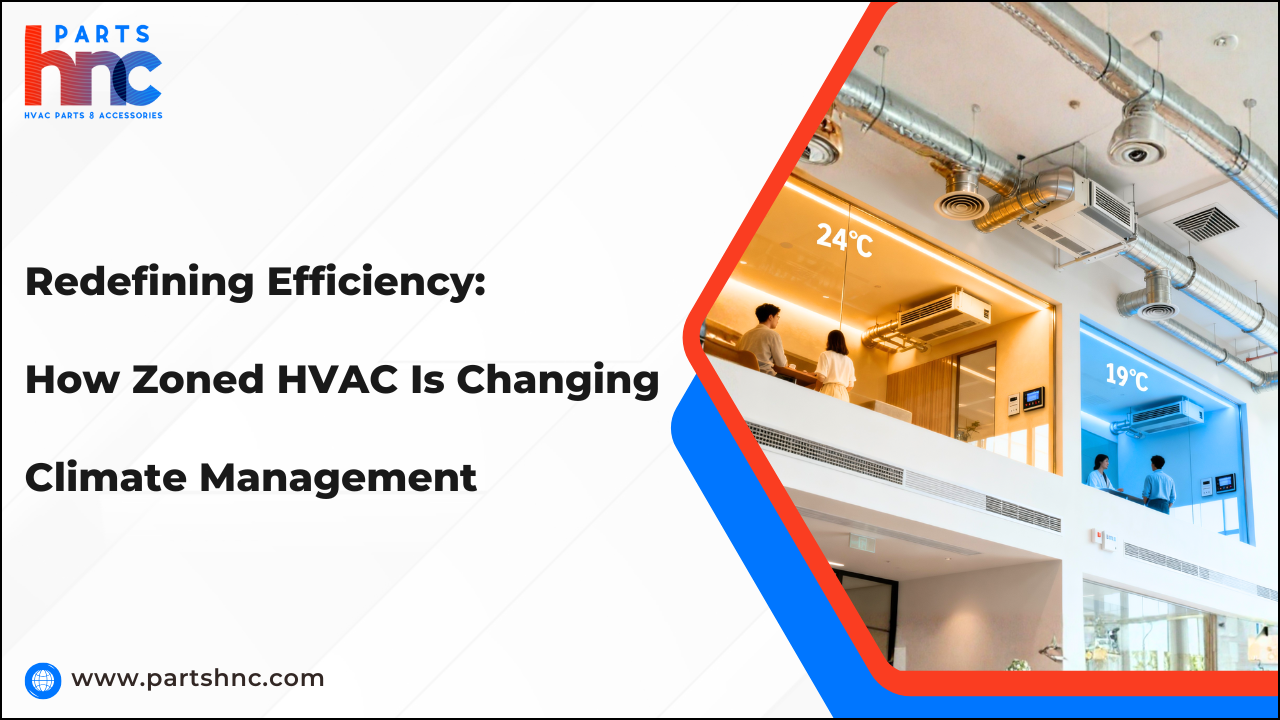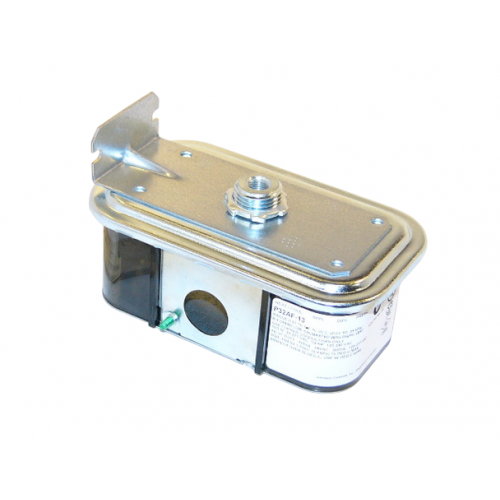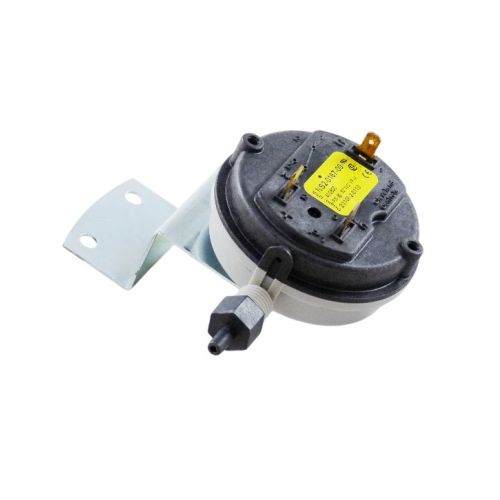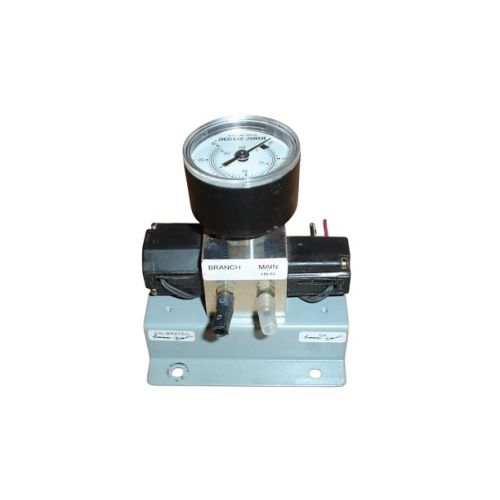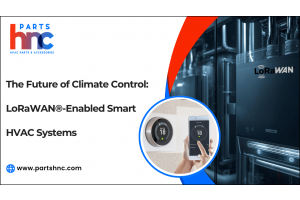Redefining Efficiency — How Zoned HVAC Is Changing Climate Management
Homeowners and businesses today are seeking smarter ways to balance comfort and energy efficiency. Traditional heating and cooling systems often struggle to meet these demands, treating entire buildings as a single temperature zone and wasting energy in unoccupied spaces. Zoned HVAC technology is changing that, redefining indoor climate management across the United States.
With zoned HVAC, a building is divided into separate areas, each equipped with its own thermostat and motorized dampers to control airflow. This system directs heating or cooling only where it’s needed, keeping bedrooms warm while living areas stay cooler. The result is improved comfort, lower energy bills, and a more sustainable approach to indoor climate management.
How Zoned HVAC Works: Room-by-Room Climate Control
Zoned HVAC systems divide a building into independent zones, giving precise control over the temperature in each area. This means every room or group of rooms can have its own climate settings, improving comfort and reducing energy waste.
-
A zone is a specific area within a building that can be heated or cooled independently.
-
A zone might include a single room, like a bedroom, or multiple rooms, like an entire floor.
-
Each zone has its own thermostat, allowing temperature adjustments based on usage and personal preference.
Room-by-Room Climate Control: This feature ensures each room can maintain a different temperature at the same time.
Example: Living room at 72°F, bedrooms at 68°F, office at 70°F. This allows customized comfort for everyone in the building, no matter their needs or schedules.
How It Works
-
Motorized dampers in the ductwork open or close to direct heating or cooling only to zones that need it.
-
Zones can be scheduled independently, so bedrooms can warm before morning, living areas stay cooler during the day, and offices are pre-conditioned before work hours.
-
This results in energy efficiency, cost savings, and maximum comfort for all rooms.
By controlling each zone or room individually, zoned HVAC ensures that every space in a home or office is perfectly comfortable, energy-efficient, and tailored to occupants’ needs.
Key Benefits of Zoned HVAC for Homes and Businesses
Zoned HVAC systems provide a modern, efficient approach to climate control by dividing a building into independently controlled zones. This setup offers not only standard benefits but also several often-overlooked advantages.
1. Personalized Comfort, Room by Room
Zoned HVAC systems create a tailored climate for every corner of your home or building. Say goodbye to uneven temperatures:
-
Bedrooms can remain cool for restful sleep while living areas stay cozy during winter.
-
Home offices or study rooms can maintain a perfect working temperature without affecting other spaces.
Every room gets the comfort it deserves, exactly when you need it.
2. Smarter Energy Use, Lower Bills
Zoning focuses on conditioning only the spaces you actually use, avoiding wasted energy.
-
Energy savings can range from 15–35%, depending on your home’s size, local climate, and daily usage.
-
Over time, this efficiency translates to noticeable reductions in monthly utility costs—especially in larger homes or commercial properties.
It’s comfort that pays for itself.
3. Longer-Lasting HVAC Equipment
By reducing the workload on your system, zoning extends the life of your equipment.
-
Your HVAC no longer needs to run at full throttle all the time.
-
Less wear and tear on compressors, fans, and motors means fewer repairs and lower maintenance costs.
Your system stays healthy, longer.
4. Cleaner, Healthier Air
Zoned airflow allows precise control over air quality in each room:
-
Prevents dust, allergens, and pollutants from drifting into unoccupied areas.
-
Supports zone-specific filtration—ideal for homes with children, pets, or allergy sufferers.
Breathe easier, knowing each space is optimized for health and comfort.
5. Eco-Friendly Impact
Using energy only where it’s needed reduces your carbon footprint.
-
U.S. homes can cut HVAC-related CO₂ emissions by 15–20% with zoned systems.
-
A greener home means contributing to sustainability while enjoying smarter comfort.
Zoned HVAC delivers comfort, efficiency, cost savings, healthier air, and smarter control, making it ideal for modern homes and businesses.
Ideal Applications Where Zoned HVAC Makes the Biggest Difference
Zoned HVAC systems boost comfort and efficiency by tailoring temperatures to specific areas. They prevent energy waste by avoiding heating or cooling unused spaces.
Use Cases:
-
Multi-Story Homes: Heat naturally rises, making upper floors warmer. In places like Atlanta or Dallas, where summers are long and hot, zoning lets homeowners keep upstairs bedrooms cool at night without overworking the system downstairs.
-
Homes with Large Windows or Sunrooms: Rooms exposed to direct sunlight often overheat. In Phoenix or Las Vegas, zoning helps maintain comfort in bright, south-facing rooms or glass-enclosed sunrooms without overcooling shaded areas.
-
Open-Concept Floor Plans: Open layouts are popular in modern homes from Denver to Seattle, but they often create uneven temperatures. Zoning ensures consistent comfort between kitchens, living rooms, and dining spaces, even when cooking or entertaining.
-
Basements or Attics: Spaces like finished basements in Chicago or attics in Boston face unique insulation and humidity challenges. Zoned control helps maintain the right temperature and air quality year-round.
-
Commercial Buildings: Office complexes in New York City or San Francisco benefit from zoning because meeting rooms, reception areas, and open workspaces each require different temperature settings for comfort and productivity.
-
Mixed-Use or Multi-Tenant Spaces: In cities like Los Angeles or Miami, where buildings often combine retail, office, and residential units, zoning allows each tenant to manage their own comfort without affecting others.
Whether for a large family home or a busy office, zoned HVAC creates ideal comfort conditions for every space, reducing waste and improving overall efficiency.
Explore how air-to-water inverter heat pumps work, their benefits, and why they’re a top choice for efficient heating and cooling.
Components of a Zoned HVAC System
A zoned HVAC system operates through an intelligent combination of parts that work together to deliver precise temperature control and energy efficiency. Each component plays a unique role in balancing comfort and performance across multiple zones.
Core Components Include:
-
Thermostats: Installed in each zone, these allow independent temperature settings for personalized comfort. Smart thermostats like Nest, Honeywell Home, or Ecobee make it easy to control zones from your phone or voice assistant.
-
Motorized Dampers: Located in the ductwork, these automatically open or close to control airflow to each zone. Brands such as EWC Controls and ZoneFirst offer reliable damper systems designed for both residential and commercial setups.
-
Zone Control Panel: Acts as the system’s “command center,” communicating between thermostats, sensors, and dampers. Control panels from Honeywell, Arzel, or Aprilaire coordinate how and when each zone receives air.
-
Temperature Sensors: Continuously measure and adjust to maintain consistent comfort levels. Smart sensor options from Ecobee or Google Nest help fine-tune temperatures in rooms that tend to run hot or cold.
-
Central HVAC Unit: Supplies heating or cooling as needed, distributing air according to real-time zone demand. Leading manufacturers like Trane, Carrier, Lennox, and Rheem offer zoned-compatible furnaces, heat pumps, and air conditioners for efficient performance.
By combining these components, zoned HVAC systems deliver precise control, enhanced energy efficiency, and balanced comfort throughout every part of the building, whether it’s one room or an entire floor.
Understand what are the most important parts of your HVAC system and how each component ensures optimal comfort and efficiency.
The Technology Behind Zoned HVAC Systems
Modern zoned HVAC systems take comfort and efficiency to the next level with smart technology integration. These innovations allow users to control and monitor temperatures effortlessly while optimizing energy use through automation and data insights.
Smart Integration Features:
|
Feature |
Function |
Example |
|
Wi-Fi and App Control |
Adjust each zone remotely via smartphone or tablet for convenience. |
Regency Parc, Coral Gables, FL – Installed 27 VRF heat-pump systems with 254 indoor units, enabling remote temperature control for managers and tenants |
|
Voice Assistant Compatibility |
Integrate with Alexa, Google Home, or Apple HomeKit for hands-free control. |
Stack House Apartments, Seattle, WA – Uses VRF zoned systems integrated with voice-enabled smart controls for amenity spaces and common areas. |
|
Adaptive Learning |
The system learns user habits to automatically heat or cool spaces based on patterns. |
LibraryPark, Columbus, OH – VRF zoning adjusts heating and cooling in residential and retail spaces based on occupancy trends. |
|
Energy Usage Reports |
Provides detailed zone-by-zone energy consumption data to optimize savings. |
JASPER® Engines Office Building, Jasper, IN – VRF heat-recovery system generates reports highlighting high-demand zones to improve efficiency. |
|
Automated Scheduling |
Allows users to set daily or weekly temperature routines for each zone. |
LibraryPark, Columbus, OH – Uses automated schedules across residential, retail, and common areas to optimize weekly energy use. |
Why Zoned HVAC Is the Future of Indoor Climate Management
As the demand for energy-efficient, customized indoor environments grows, zoned HVAC systems are leading the way. They ensure precise comfort in every space while optimizing system efficiency. By reducing wasted energy and tailoring temperatures, they make living and working spaces more comfortable.
This approach reflects the future of smart, eco-conscious building management.
Key Takeaways:
-
Enhanced Property Value: Homes and offices with zoned HVAC systems are more attractive to buyers and tenants.
-
Reduced Hot/Cold Spots: Even historically difficult-to-condition areas receive consistent temperatures.
-
Improved System Diagnostics: Advanced zoning allows easier monitoring of system performance and early detection of issues.
-
Customizable Zone Expansion: New zones can often be added as needs change without major renovations.
Zoned HVAC systems represent the future of indoor climate management by combining efficiency, comfort, and adaptability. They offer tangible benefits for both daily living and long-term property value. Investing in zoning today ensures a smarter, more resilient, and enjoyable indoor environment for years to come.
Looking to upgrade your home or office comfort with zoned HVAC? PartsHnC offers replacement parts from top brands: Honeywell, Trane, and Lennox, making it easy to build or enhance your zoning system. Essential parts include heat pumps, thermostats, zone expander control, and zone valve motors, all available with fast shipping and expert support for smarter, energy-efficient climate control.
References:
https://www.ahrinet.org/scholarships-education/education/homeowners/how-things-work/zoned-heating-and-cooling
https://www.energy.gov/energysaver/heat-pump-systems
FAQs
How is a zoned HVAC system installed in new or existing buildings?
It’s easier and more cost-effective to install during new construction. In existing homes, careful planning and professional design make retrofitting possible without major disruption.
How much does it cost to install a zoned HVAC system?
Zoned HVAC systems usually cost $2,000 to $5,000 more than traditional setups for residential homes, depending on the number of zones and system complexity. Commercial installations can cost more due to larger spaces and advanced zoning requirements.
Why are zoned HVAC systems worth the investment?
They typically pay for themselves within 5–8 years through lower utility bills and improved energy efficiency. Additional savings come from longer equipment life and available energy rebates or tax incentives in many U.S. states.


